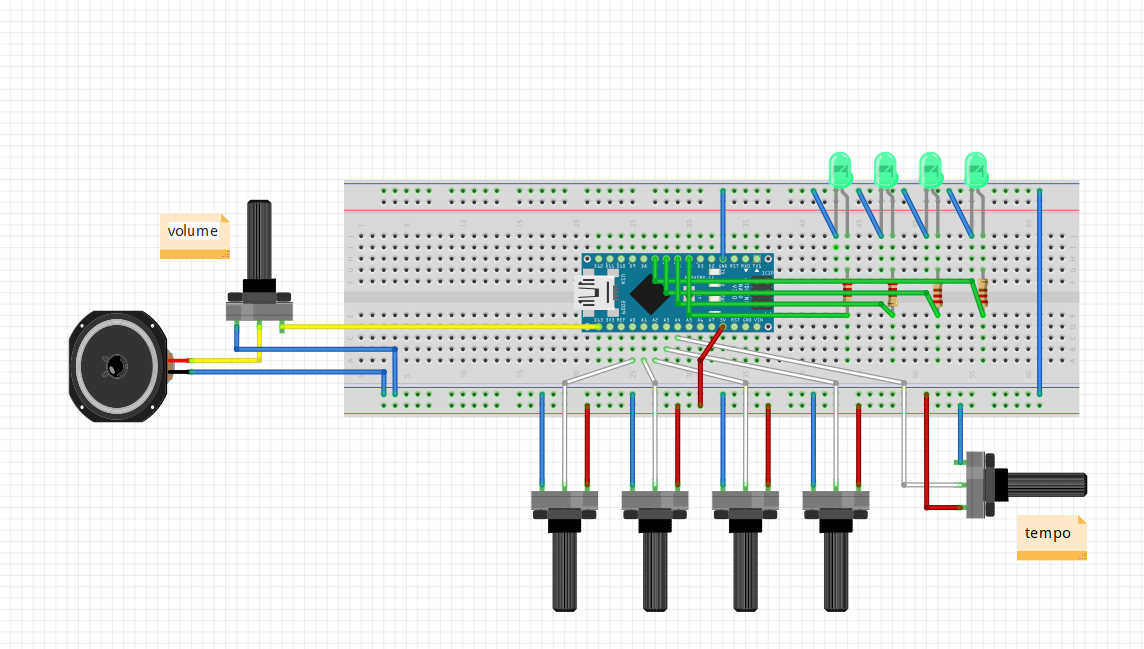You can find all kinds of super complicated and big sequencers on YouTube and they seem to be fun, so I wanted to try one.
The potentiometers used for the steps are 100K, for a higher resolution. The one for temp and vol are 10K. But these values are not a rule, with a higher resistance we will have a finer adjustment, which is advantageous for the steps.
If the potentiometers change the values in the wrong direction, we can change GND with 5V on the potentiometer or we can change the code ex: "map (analogRead (A0), 0, 1023," to "map (analogRead (A0), 1023, 0,"
To power the arduino I used an old phone battery, a TP4056 module and a dc step up converter. Mounted on the lower level of the toy.
If you use the VIN pin, remember that the diode for reverse polarity protection cuts off 0.7 V.
















Comments
Please log in or sign up to comment.